According to the Mayo Clinic, exercise can have a profound effect on your life – at all stages and ages. The benefits include weight control, disease prevention, mood improvement, a boost in energy, better sleep, and improved bone and muscle strength (notably your core). And, exercise can provide you with a social outlet. The Centers for Disease Control also views exercise as a way in which you can keep your “thinking, learning and judgment skills sharp as you age.”
As the saying goes, variety is the spice of life, and that applies to exercise. In order to stay engaged, it’s important to mix up your routines.
In November 2017, my editor asked if I would take on this challenging feature and try out a few different fitness programs offered in our area. From Alien Yoga – known as Nauli Kriya – to Zumba, I was aware of the numerous fitness crazes that are out there. Over the years, I’ve tried several of those “crazes” myself, including Billy Blanks’ Tae Bo and Jillian Michael’s DVDs. I’ve joined gyms, took classes and jogged a country mile or two. As you will discover, Lancaster County is keeping pace with the newest trends and classes that are keeping Americans physically and mentally fit.
#1 Gentle Journey on the Hydrorider®
at Pleasant View Retirement Community’s
Town Square Health Club
The aquatic bike, in my case a Hydrorider®, is made of marine stainless steel and looks like an ordinary stationary bike without the front wheel. The seat also adjusts for one’s height when submerged in the 4-foot-deep water. (You want the water to be chest level.)
When I first arrived at Pleasant View, I was greeted by Amanda Hall, the sales and marketing manager, and Haley Brumbach, the fitness center manager. Before stepping foot into the liquid gym, I needed two things: aquatic footwear and a few tips about the bike. (Please note: Covered-toe, supportive footwear must be worn for the hydro classes; for safety reasons, shoes with laces are not recommended.)
Other than a daily shower, I’m not in the water a lot; therefore, I don’t have a need for aquatic shoes. Thankfully, Haley had an extra pair that fit me like a glove. Next, I was “fitted” for my bike. Haley adjusted the seat vertically by measuring the height of my hip bone. She then instructed me on how to operate the pedals, saying, “Don’t push down like you would a normal land bike. Instead, pull up against the water’s resistance.” And, these are not regular pedals like my fourth-grade banana-seat bike; these pedals come with a cage for your feet to settle into.
After a few more tidbits of information, I was ready to get in the water. The bike has two small wheels on the front in order to lift the bike from the back and push it to its destination. So, down the ramp I went into the lukewarm water. I parked myself in the middle of seven other participants. And, as I smiled and awkwardly climbed onto my bike, class began.
My instructor for the class, Erica Moschette, is a certified personal trainer and certified Hydrorider® instructor, who is also part of the fitness staff at Pleasant View. She synchronized the music playlist in advance to match the day’s water workout. While pedaling, there are a few different ways to grip the handlebars: Position 1, hands are placed in the center of the handlebars closest to you. Position 2, hands are placed in the curve of the handlebars. Position 3, hands are placed at the top of the handlebars. And, position 4, the body is moved behind the seat deeper into the water, with feet still in the pedals, and hands gripping onto the front part of the seat.
I can honestly say that I didn’t know you could sweat in the water until I had taken this class. Erica doesn’t demand anyone to pedal faster, like some spinning-class drill sergeants. Instead, she allows you to go at your own pace with added motivation and encouragement.
“You want to expect a higher-intensity workout with a very easy way of cooling off, kind of like when we go back into fourth position, you can go into the water and catch your breath,” Erica says. “The beauty of Hydrorider® is that you get to work your arms on top of the resistance from the water, which is like 8 or 12 times the resistance of air.”
Another benefit of the water cycling class is that it helps those
with physical limitations, such as fibromyalgia, arthritis or other
muscular diseases.
“I do all of my exercising in the pool because of my joints and arthritis,” says Barb Charles of Ephrata. “I come five days a week, not for the classes all the time, but to work out in the pool. It’s a wonderful experience.”
Manheim resident Pat Boyer loves this particular class at Pleasant View. She was diagnosed with Charcot-Marie-Tooth disease (CMT), which is a hereditary disease that damages the peripheral nerves of your body.
“When I was young, I always liked riding bikes, and I did up until my 50s. Then, I started falling all the time and found out that I have a nerve and muscle disease called Charcot-Marie-Tooth,” Pat explains. “Out of the water, I can’t do any land exercises because the nerves and the muscles are deteriorating. I do the other exercise classes that Erica teaches, but this one here is so easy. It’s amazing.”
This class is for any age group. Other aqua bike classes of the same style but higher intensity are offered on Tuesday and Thursday evenings. I may have been the youngest participant that day, but those guys and gals were killing it.
Details:
Gentle Journey: 30-minute workout
Average age in Erica’s class: 30s to 60s
What muscles are being worked: “The total body. The ones you think of the most, of course, are the quads and hamstrings. You definitely work your calves; you don’t feel it quite as much in your quadriceps, but when you’re working your arms, you’re going to get your biceps and triceps. And, definitely your abdominals and your back.”
Number of bikes: 8 (7 for class, one for instructor)
Pleasant View Retirement Community’s Town Square Health Club, 544 North Penryn Road, Manheim.
717-664-6305 or pleasantviewrc.org/town-square-health-club.
#2 SilverSneakers Shallow Water Pilates
at Hempfield recCenter
Technically, I’m not eligible to have a SilverSneakers’ membership, but I was allowed to participate in Louise White’s Shallow Water Pilates class at the Hempfield recCenter one cold November morning.
“We started this program roughly about 10 years ago, and it’s mainly for stretching, balance and for people who might be recuperating from hip surgery or a knee replacement,” Louise shares. “Our older clientele, who still want to keep exercising, find that the water is very adjustable to them, and they can really move in the water. That’s what they want to do, they just want to mainly keep on moving.”
I joined the class of about 20 participants and slowly glided to a spot toward the front. At first, some movements were a little unclear (it’s confusing to mirror someone when you can’t see their legs under water), but there were some helpful experts to guide me through. One lady told me to use my left leg, when I was accidentally using my right, while another shared that I needed to push my leg out in front of my body instead of to the side.
Ninety-four-year-old Jean Crist has been attending the recCenter for years. She laughs and says, “I wouldn’t be able to move if I didn’t come to these classes. You’ve got to come, or you don’t move.”
Jean’s friend Ella Mellott, who is 90, enjoys exercising and says she “likes to be among her friends.”
After the class, I remember saying it was the most relaxed I had felt in weeks (maybe even months). The soothing music and gentle stretching movements, from my head and neck down to my calves and ankles, worked so well together. I’m so accustomed to the sweaty, non-stop hardcore land workouts from my teens and 20s that my body needed to slow down and relish in the gradual stretches from left to right and front to back.
“Baby boomers, like myself, want to keep moving. Not everybody can go out and do the fitness center, or run, or play tennis. Some people are recovering from other surgeries, and they just cannot do the land exercises,” Louise says. “When you’re in the water, you only support 10% of your body weight. So, it’s just a better exercise for them, and they can just keep moving. They want to feel good, and the water really makes you feel good. It’s a stress reliever sometimes.”
Joanne Pinero has been taking the water aerobics classes for six years and says, “It has really helped my arthritis and helped with my weight control.”
Eighty-five-year-old Jack Coffin started taking the water classes in January 2017. He had both hip and knee operations but says the classes have helped to “tighten up the muscles and ligaments” in his body.
Details:
SilverSneakers Shallow Water Pilates: 1 hour
Average age in Louise’s class: 30s to 80s
What muscles are being worked: “The whole body. We do legs, quads, bis, tris, neck and back. You’ll stretch out, and you’ll get the full workout.”
Average class size: 10 to 20. Some days a little over 20 (when classes are combined)
Hempfield recCenter, 950 Church Street, Landisville.
717-898-3102 or hempfieldrec.com.
#3 Partner Dancing at BeyonDancing
I was very eager for this next experience because not only would I be learning some basics of partner dancing, but I would be attempting it with my husband, Justin.
Growing up, I was involved in dance through either a hip-hop/jazz dance class or competitive cheerleading. However, “partner” dancing is totally new for me.
Before leaving for the studio, my husband admitted that he was a little nervous. “I thought it was going to be a group lesson,” he says. But, once we met with owner Pam Bucher, who is also the studio director and Pilates instructor, and Oscar Restrepo, choreographer and dance specialist, his nerves were at ease.
Oscar and Pam met almost a decade ago through one of Oscar’s former students. Pam had played competitive tennis for 40 years and decided it was time for a change. She eventually received her Pilates certification and now teaches classes at the studio. She incorporates core strength, posture, breathing and other aspects of Pilates into dance lessons.
Oscar, originally from South America, moved to Lancaster in 2007. He obtained his associate and master’s degrees in rhythm dances from the Professional Dance Vision International Dance Association (ProDVIDA).
I chose two styles of dancing beforehand that I wanted to learn: salsa and swing, which are also two of the most popular dances offered at BeyonDancing. “Of course, you had to pick the two hardest ones,” jokes Justin.
We stepped onto the dance floor and learned our hand and arm placements first. To begin, I was paired with Oscar, while Justin was paired with Pam. The couples stood side by side so that it was easy to match what the female should be doing and the same for her counterpart.
As we learned the steps, Oscar would cue us with numbers, “One, two, three, four,” and commands, “Step to the right.” Justin and I both enjoyed the praise we received when we performed the dance correctly.
Besides learning the moves and putting them together with music, BeyonDancing teaches a lot more than your typical ballroom dances.
“One of the reasons we call this BeyonDancing is because we feel you can learn so much more than just the steps. The couples learn to work together,” Pam shares. “It builds up your self-confidence, teaches you the correct posture and improves balance, coordination and flexibility. We incorporate all these things into our students’ dance lessons.”
There are also many health benefits of partner dancing, such as decreasing depression, muscle toning, preventing dementia, burning fat, lowering stress levels and more.
“We realize that when you dance, you have to make decisions at a fraction of a second, which helps develop your brain function,” Oscar says. “We’ve discovered that a lot of people with dementia, when they dance, it helps with their dementia. It also helps depression. People may come in after having a bad day at work and walk out with a huge smile.”
And, it’s true. Numerous studies and research prove that dance helps to lift one’s spirits. I, too, felt more confident and enjoyed our lesson, which flew by. In my opinion, I think everyone should give it a go, at least once.
“Come and experience the joy of partner dancing. We’re patient and very understanding,” says Pam. “Take that first step, come in and give it a try.”
Justin agrees, “Pam and Oscar took a personal approach to make it feel like it was friends teaching friends. It was intimate. I didn’t feel like I had to prove anything to anyone.”
I can honestly say that Justin and I talked about our lesson that night on the drive home and over dinner. We even considered making it one of our resolutions for the new year.
Details:
What muscles are being worked: “All of them! Your core has to be engaged. Obviously, you’re using your legs, your lats, hips …”
Note: Since taking our class, BeyonDancing has closed due to weather-related damage to the studio. An array of other dancing opportunities is available in Lancaster County. For example, check out Ballroom on the Square, City Ballroom, Indigo Blues and Arthur Murray Dance Studio.
#4 Cycle Class at the Lancaster Family YMCA (City Center)
I’m not going to lie … I am NOT a morning person. So, I wasn’t too enthusiastic when I learned about my 5:45 a.m. cycling class at the Y. Sure, I could’ve taken the evening class, but in order to meet my deadline and work it into photographer Nick Gould’s schedule, I had to bite the bullet and show up before the sun did. But, I’m glad I did.
Beth Titus’s morning cycle class is a shot of adrenaline for your body’s wakeup call! Once again, I had never taken a cycling class, but I am familiar with stationary bikes, which helped my case a little, meaning I knew how to sit on a bike without falling off. Hooray!
I arrived around 5:30 a.m., which was perfect because that gave Dan Flynn just enough time to adjust my bike, teach me about the gears and give me a pep talk.
“Now, you want to start at around gear 3, that’s what she [Beth] calls a flat road,” says Dan, who’s been cycling for about 11 years. “It’s such a great aerobic exercise, and it’s low impact, so you’re not hurting your joints.”
There are 15 bikes in Beth’s class, so it’s a first-come, first-served basis. I guess you could literally say the “early bird gets the worm” in this case (pun intended). It was a full roster that morning, and I was the new kid.
“We’re doing a high-intensity 45-minute workout, which has some strength training and endurance training involved,” explains Beth, who is also a full-time teacher for Penn Manor.
Right out of the gate, the music is pumping as you pick up the pace on your bike. You want to keep your rpms around 85 to begin. As the class progresses, Beth tells everyone when to bump up the gears and what rpm she wants you to pursue.
Dan briefed me on the gears and rpms ahead of time, thankfully. He said to try and stay within the same rpms that Beth calls out but not to worry too much about advancing the gears, which adds resistance.
The highest gear I hovered around was 10, but amazingly, I was able to keep a pretty good pace with the increasing of rpms, which at one count was between 110 and 120. Beth and Dan said we probably rode an estimated distance between 10 to 12 miles (mine was probably between 8 and 10).
And, remember to drink water! At one point, I must have been in the zone because Dan had to remind me to pick up my water bottle. You may also want to bring a small towel to wipe off excess perspiration.
“It’s an intense workout in a short period of time,” Beth reminds me. “It’s a great cardio workout, and it’s controlled,” she adds, as opposed to outdoor biking in which more injuries can occur.
The physical benefits of cycling include excellent cardio, balance, strength and even emotional, as Beth points out. “This is a great group to be with. Everyone works hard, and they’re very helpful to each other … and very welcoming of people.”
Details:
Cycle class: 45 minutes
Average age in Beth’s class: 30s to 60s, occasionally some teens and even 80-year-olds
What muscles are being worked: “A lot of core, definitely all lower-body workout. You’re working your triceps, your shoulders, your core, lower back, abs and even your upper back.”
Number of bikes: 15
Lancaster Family YMCA City Center, 265 Harrisburg Avenue, Lancaster.
717-393-9622 or lancasterymca.org.
#5 Float Yoga of Lancaster
I can count the number of times I’ve participated in some type of yoga on one hand. It’s not that I don’t enjoy it, but I’ve always been into more aerobic, fast-paced exercises. Little did I know what Float Yoga of Lancaster had to offer.
Owner Bradford Nicarry, who is also a certified yoga teacher and licensed massage therapist, has an eccentric personality, which matches perfectly with his hybrid lessons of part yoga/part inversion table/and part TRX workout.
“I got started in yoga because it was forced on me in a black belt class. Once a month, we would do something different, and this little old lady with white hair came in and kicked my butt,” Bradford laughs. “My ‘a-ha’ moment was when I realized that strength and flexibility are intertwined and very much co-related; all the while, I thought strength was over here and flexibility was somewhere far on the other end of the spectrum. But, I realized they were very much related.”
Like many people, I questioned if these aerial fabrics and cables could hold my weight. Well, unless you tip the scales at 2,000 pounds, you can partake in a Float Yoga class. And, no, you don’t have to bend like a burrito to prove your flexibility skills.
Bradford says, “Something we hear all the time is ‘I’m not flexible enough to do yoga,’ and it’s a total face-palm moment because if you’re not flexible in a specific joint, you’re going to need yoga to get there. And, then again, flexibility isn’t like across the board, it’s dependent upon each joint.”
This class was very direct, and by that, I mean it wasn’t one of those I’ll tell you what to do, show you how to do it and then you repeat what I just did classes. Bradford would explain and go through each movement as he and I individually performed each task with our own fabric. If he were to just say pigeon pose, I wouldn’t have a clue. But, he showed how much fabric to use, where to place my hands and arms, and how to get my feet off the floor and into the correct pose in the hammock (and without breaking my neck).
I honestly thought beforehand that I probably couldn’t do half the poses he showed me, but I was wrong. I learned, halfway through the class, to let my guard down, relax a little and just breathe.
“The other cool thing about yoga, you get a bit of that Zen element in it. You get a great workout, but it kind of calms you out a little bit, too,” Bradford says.
Some of the major health benefits of aerial yoga include lowering blood pressure by inversions (basically, hanging upside down in the air), alleviating lower back pain, increasing muscle tone and providing functional strength.
“Yoga gives you exercises you can do while recovering from an injury, which is beneficial for athletes,” Bradford explains. “Any time an athlete can lengthen a muscle, that muscle is going to perform better for them, and it’s going to be less prone to injury in the first place.”
Kortni Elion takes Krav Maga, which is an Israeli military self-defense/fighting system, and boxing at Nye’s Gym in Lancaster. She has been taking classes at Float Yoga for about two months now.
“Float Yoga kind of counterbalances all the other stuff. It helps to alleviate some of the stress from my body by stretching,” she states. “I was in a car accident a couple of years ago, where I had a herniated disk, so it helps to stretch out that lower lumbar where I feel pain from time to time. I also enjoy the stress relief aspect of it.”
And, indeed, it does stretch out those areas that are prone to tense and tighten every now and then. For instance, I have lower back issues, and the next day I felt less strain in that area. I was a little sore in my abs and arms, but it’s because you’re using muscles that you don’t even know you’re using. Overall, I enjoyed my visit to Float Yoga.
“There’s different styles and denominations of yoga, so you might need to try a couple different spots to find the right style of yoga and right instructor personality for you,” Bradford says. “We’re all really intimidated about starting anything new, but just give it a shot. We measure success differently in yoga. Success is achieved in a yoga class by leaving and feeling better than you did when you came in.”
Details:
Float Yoga: 1 hour
Average age in Bradford’s class: early 20s to early 60s
What muscles are being worked: “All of them! We did abs, legs, chest and arms. The great thing about yoga is that you get a lot of the stabilizing muscles that you don’t always get in other styles of workouts, like the little in-between ones that are often neglected. In yoga, you’re lifting your body weight all the time.”
Maximum number for Float Yoga class: 13 (limited number of hammocks)
Float Yoga of Lancaster, 245 Bloomfield Drive, Suite 210, Lititz. 717-475-6333 or float-yoga.com.
#6 Spooky Nook Sports Climbing Gym
To say I was excited about this next experience would be a huge understatement. I was thrilled to check out the Nook’s Climbing Gym with my 6-year-old daughter, Danielle.
She was nervous at first, which showed as she fidgeted about the cushioned floor, but those nerves gave way to anticipation once our instructor, Director of Adventure Adam Bofinger, briefed us on safety guidelines, equipment usage and climbing procedures.
“For first-timers, we usually set people up in the auto belay system. It’s a self-belay, so we teach you how those work and give you some safety instruction,” Adam says.
If I had not prepared ahead of time, my first question would be
“What the heck is a belay?” For those not privy with climbing lingo, belaying is a process that uses a rope system to protect a climber from falling. So, an auto belay system allows an individual to forgo the help of a human belayer.
Danielle and I were fitted with special climbing shoes and harnesses. Adam showed us how to clip into the auto belay and how to unclip. Danielle was eager to get started, so I clipped her in and stood by like a mother bird watching her young take flight.
The hardest part, for Danielle and myself, is letting go … literally, letting go of your grip and throwing your hands in the air (like you just don’t care). The auto belay controls the slack as a person climbs higher and helps guide his or her descent when the climber is ready to have both feet on the ground again. Try to remember though to not grab the rope, which will make your descent happen much faster than you would like.
Adam pointed out that some routes are easier than others, which is why they have all the colorful tape stuck to the walls by the grips, or holds. I remember the red holds being the easiest to maneuver.
After using the auto belay system, Adam switched us to another climbing wall where he manually belayed for Danielle and myself. The walls of the climbing gym reach 30 feet in height. The third area we visited was the freestanding boulder, which stands at a height of 15 feet; it was more of a challenge for myself. Danielle loved the side with the orange holds; it’s more kid-friendly.
“I loved it! It was fun, and it wasn’t dangerous because he [Adam] told me not to be scared,” Danielle says. When asked if she’d like to visit again, she exclaimed, “Yes, 1,000 times. Rock climbing is my favorite.”
Speaking of kid-friendly, the Nook has a Climbing Club for ages 7 through 12. According to the Nook’s website, the club is “for youth climbers who are looking for a fun, non-competitive environment to progress their climbing skills and improve their overall understanding and appreciation of the sport.”
If your child or teen has a competitive side, he or she may want to look into the Nook’s Climbing Team, where team members work with coaches on and off the wall and compete in local and regional bouldering competitions.
The Clip & Climb area is more of a fun-oriented climbing center. Adam says it’s very kid- and beginner-friendly, where all of the climbing obstacles are controlled by an auto belay system.
Kids to adults can participate in both climbing areas, but “28 pounds is the minimum. We’ve had 3-year-olds climbing in here before. It’s a little more challenging at that age, but as long as you’re within the weight limit and you can fit into a harness safely, really anyone can climb.”
There are many health benefits to climbing. It provides great physical fitness for one’s body and allows like-minded people to meet one another and share ideas, Adam suggests.
“Just have fun with it. Don’t get discouraged immediately. There’s always something to advance to,” Adam says. “There’s something for everyone. It’s definitely worth trying. A lot of people think that climbing is for experienced rock climbers only in a facility like this, but we cater toward beginners and first-timers, too.”
Details:
Nook Climbing Gym: You do not have to be a member to participate. For membership rates and day passes, visit the website.
Average age: Kids to adults, late teens to 40s
What muscles are being worked: “All of them. Even the brain. A lot of people think it’s strictly upper body, but you use your legs and your core, just keeping your body in certain positions, and finger strength.”
Spooky Nook Sports, Nook Climbing Gym, 75 Champ Boulevard, Manheim.
717-945-7087 or spookynooksports.com.
#7 BOXFIIT Kick & HIIT at Universal Athletic Club
With the Eye of the Tiger playing in my head, I decided to go with “boxer” braids for my next exercise venture: Kick & HIIT, a BoxFIIT program at Universal Athletic Club.
And, who better to teach it than a guy born and bred from Philadelphia, Director of the Boxing Program Jeff Wallace, who answered my rhetorical question, “So, I’m guessing you’re a Rocky fan?” with a laugh.
“Our Kick & HIIT class incorporates a Muay Thai style. The difference between American kickboxing and Muay Thai kickboxing is that Muay Thai utilizes multiple strike points,” Jeff shares. “They use kicks, they use punches, they use knees, they use elbows, and all of that is performed on the bag.”
The 125-pound bag is a professional grade MMA-style bag, and there are several hanging in the boxing area of Universal. I grabbed a pair of gloves, strapped them on, and prepared myself for some punching.
“It’s geared towards the public. Anybody can do it. The curriculum is geared so that you can build yourself up and go at your own pace,” Jeff explains. “The complexity exists in the way of a number system, so we use numbers to call out our punches, like 1,2,3 and 5,6,5. I tell everybody taking their first class, ‘When in doubt, punch it out.’”
And, I did. I dropped some right hooks, elbows and kicks to that bag. But, as we progressed, I learned how out of shape I was. The entire class is fast-paced, with 15-second and 30-second breaks in between. You quickly swig some water, throw your gloves back on, get the instructions from Jeff and go back at it. In between the punches, kicks and elbows, Jeff had us doing crunches, plank jacks, side planks and more. Even though my body was definitely feeling the burn, I knew the benefits would be rewarding.
“The physical benefits are massive. The loaded impact resistance you’re receiving through your bones is not only going to enable you to develop lean muscle mass, but it’s also going to thicken your bones and improve joint health,” he says. “It’s particularly good for women with arthritis and osteoporosis concerns. It can definitely improve those conditions over time, and that’s been scientifically proven.”
He continues to say the mental benefits are abundant, as well. “I know it’s cliché, but the endorphin release is massive. There’s a wealth of psychological benefits, too. You do think a lot during these classes, so it keeps you mentally sharp. Coordination, balance and things of that nature all improve.”
I can also see how some people could be apprehensive or overwhelmed when walking into a boxing class for their first time, but class participant LaTricia Morris is not one of those people.
“I didn’t really know exactly what to expect, but I’m not normally one who gets easily intimidated. I love being challenged, and I don’t like anybody trying to tell me, ‘Oh, you can’t do it,’ especially myself,” LaTricia says. “I was looking to get in shape, especially with having two kids, and I really wanted to be able to be active. So, coming in here and being around coaches that push me to learn more, to do better, to improve and not just get a good workout in, but really acquire better technique, they really helped me feel comfortable coming in to it to begin with.”
LaTricia also likes the group aspect of her boxing workouts. “For me, I benefit from being in a group setting, and I love being around people who make me feel charged and who really just pump me up. From the time I stepped in to this class, I love the energy, I love the challenge, and I love the people, which makes a world of difference for me. It’s a program that helped me to fall in love with fitness. We cut up, we have a good time with each other and get great results.”
We rounded out the class with partners who would hold the bag while the other would do different punch sequences until Jeff had walked around to everybody. And, just for good measure, he told us to end the class with 20 burpees.
Jeff reiterates, “Don’t be intimidated by it. It truly is built for everybody. The biggest obstacle we have is overcoming the fear factor; a lot of people associate blood and guts to what we do, just from hearing the words boxing and martial arts and things like that. People automatically think we’re in the ring beating each other up, and that’s not what we do. This is geared to the masses. So, don’t be intimidated and go at your own pace. It’s not a competition.”
Details:
Kick & HIIT BoxFIIT class: Approximately 1 hour
Average age in Jeff’s class: 30s to 50s, mostly female
What muscles are being worked: “You’re going to work your entire body.”
Average class size: Capacity of 19. Usually runs around 15 per class.
Universal Athletic Club, 2323 Oregon Pike, Lancaster.
717-569-5396 or universalathleticclub.com.






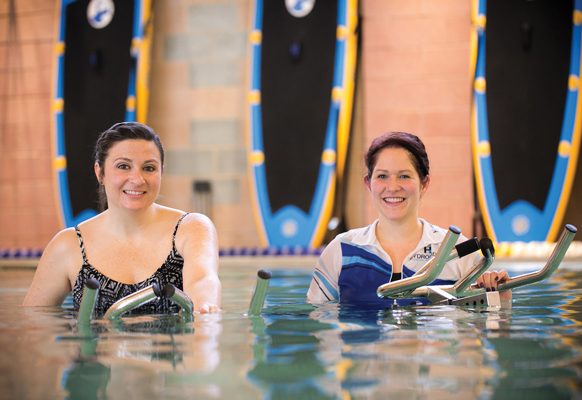
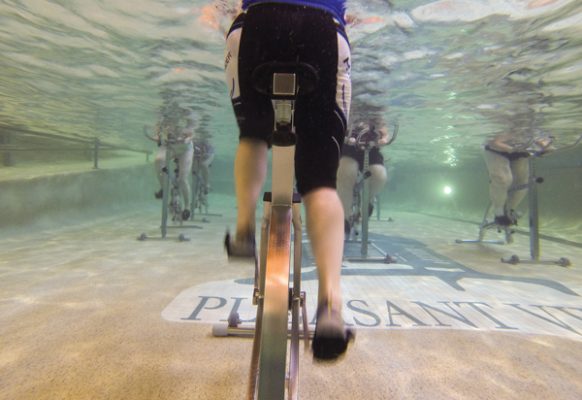
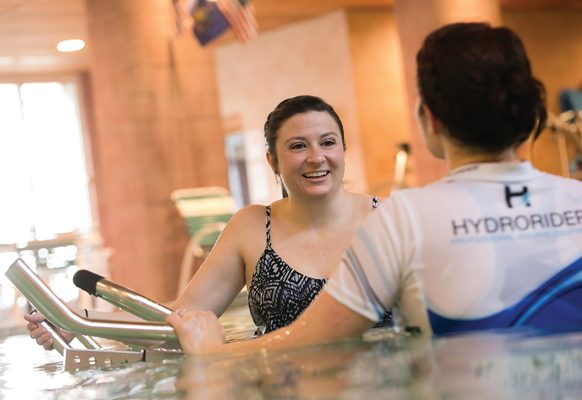
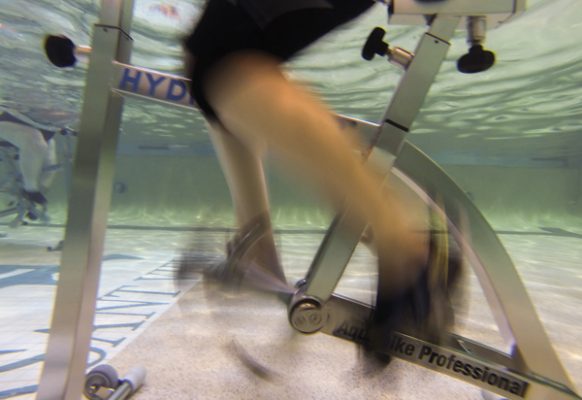
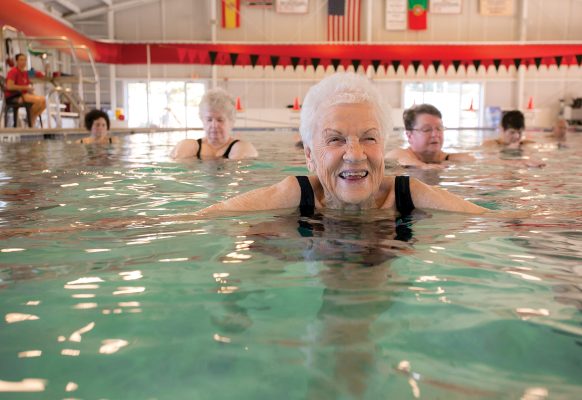
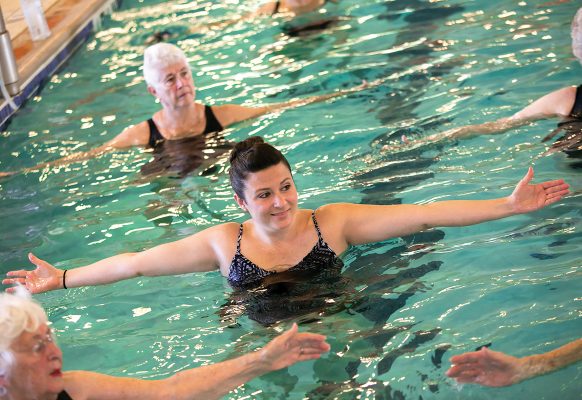
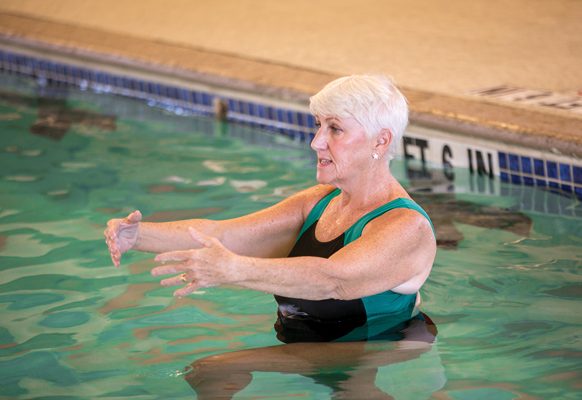
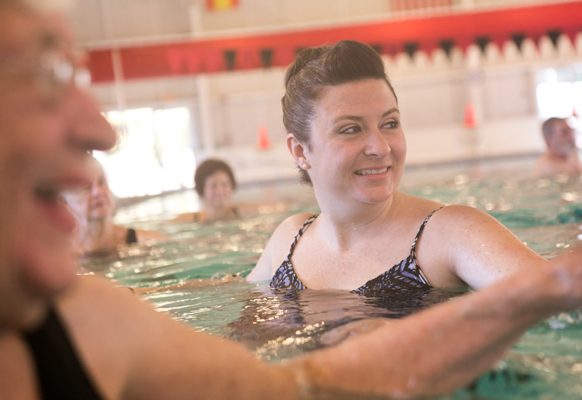
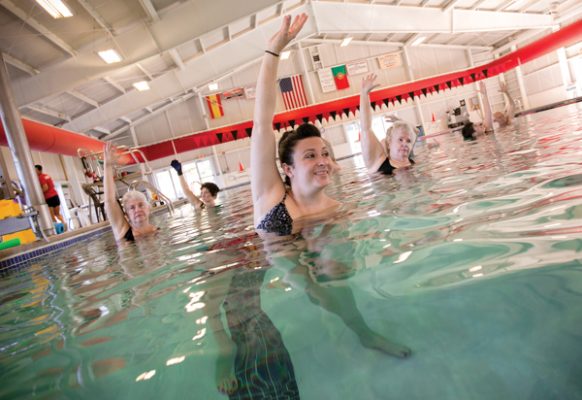
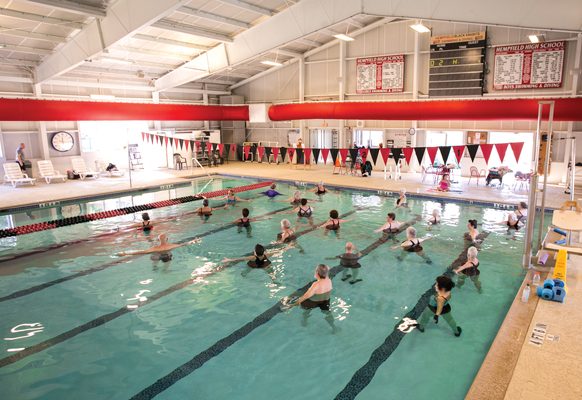
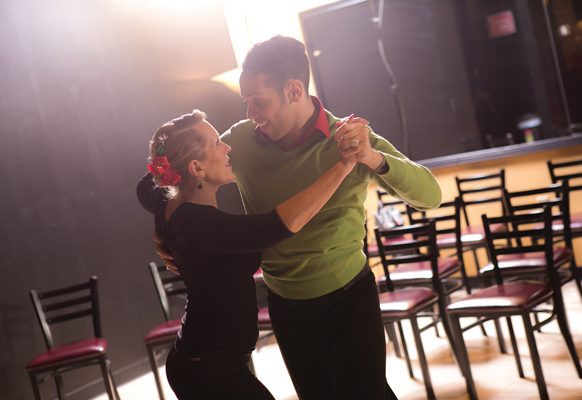
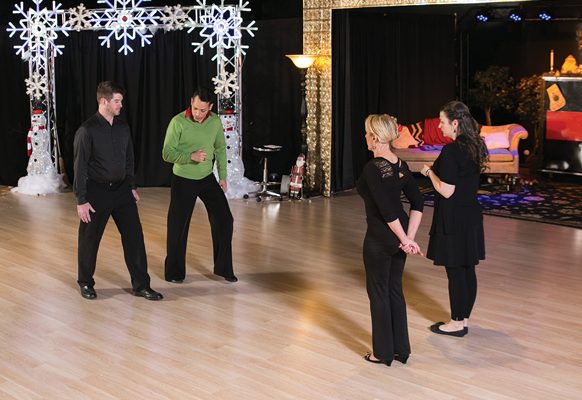
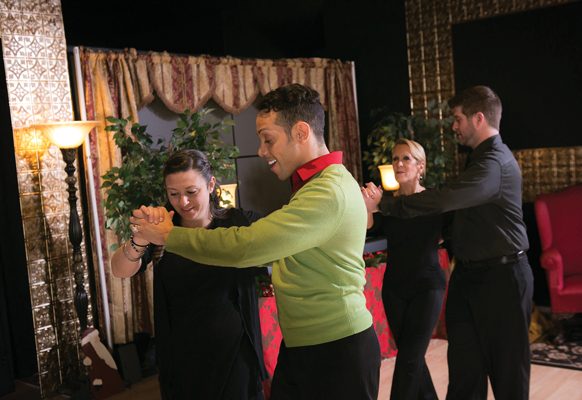
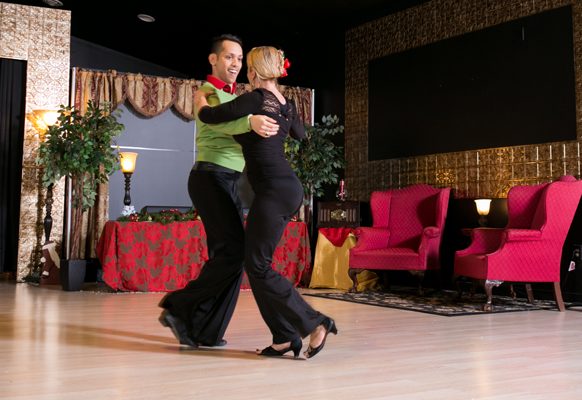
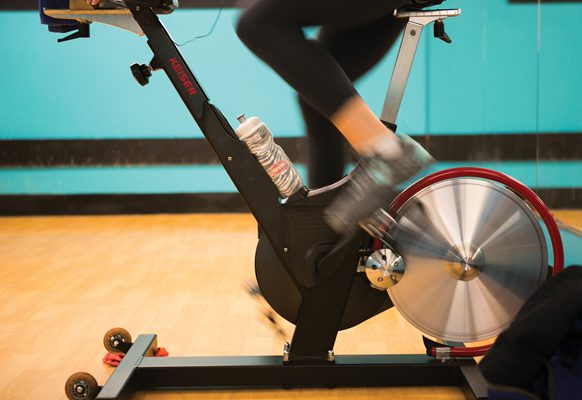
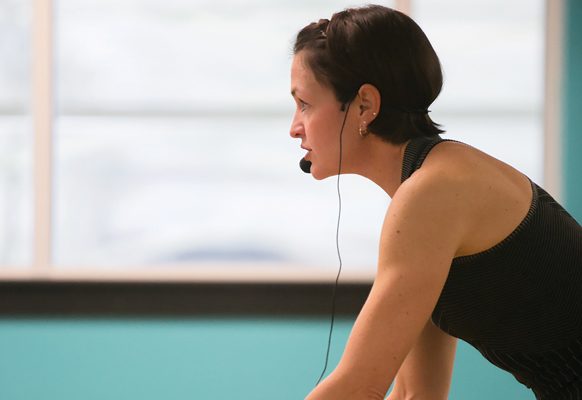
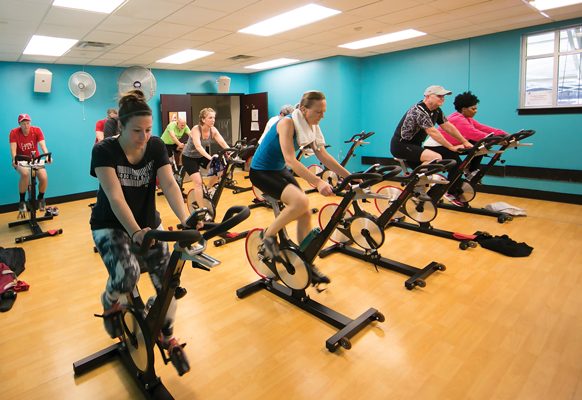
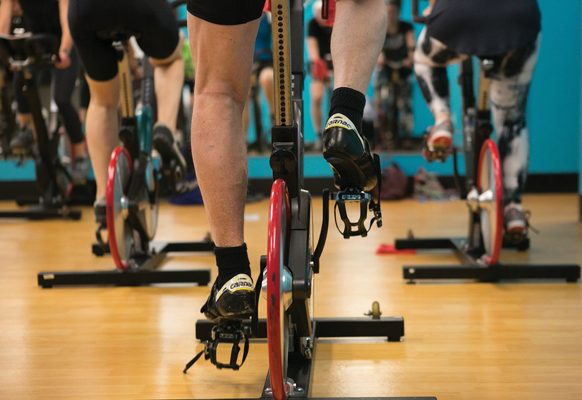
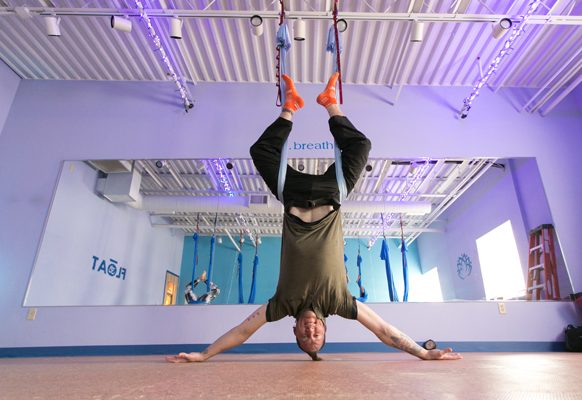
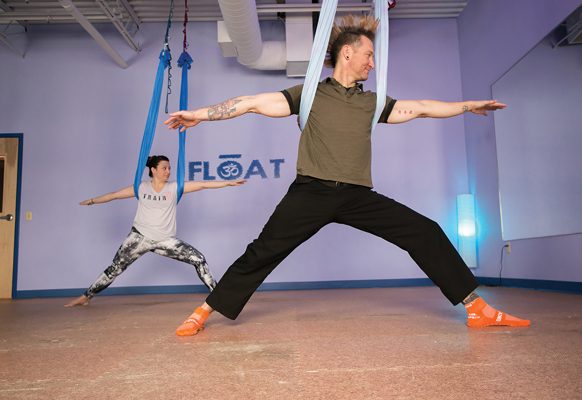
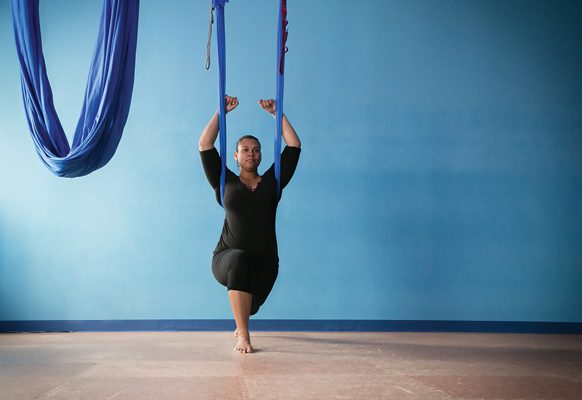
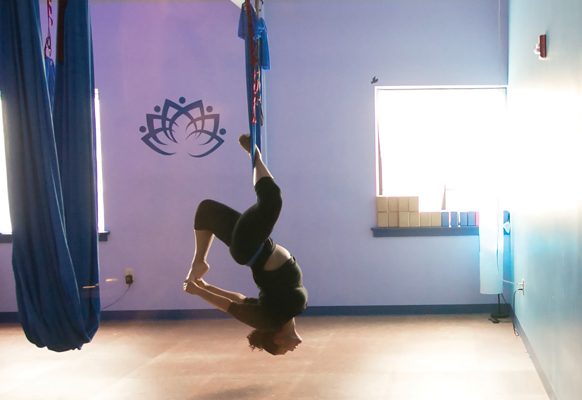
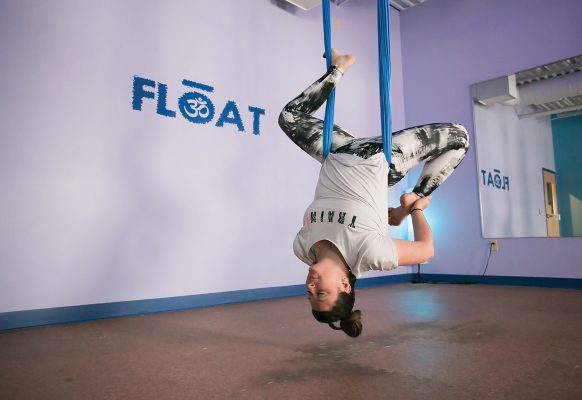
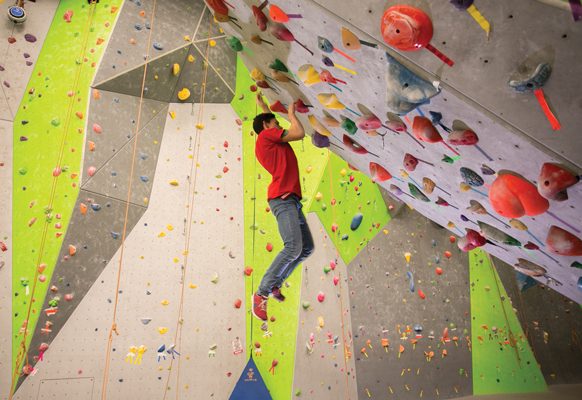
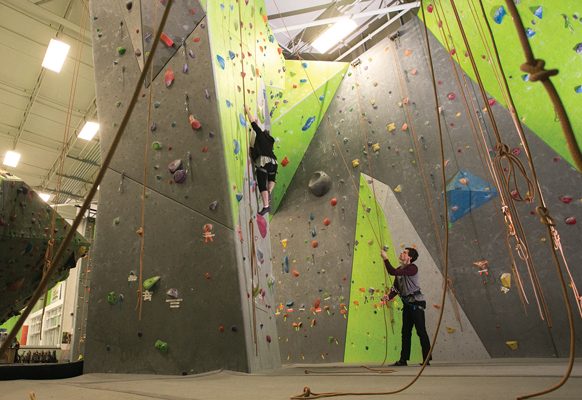
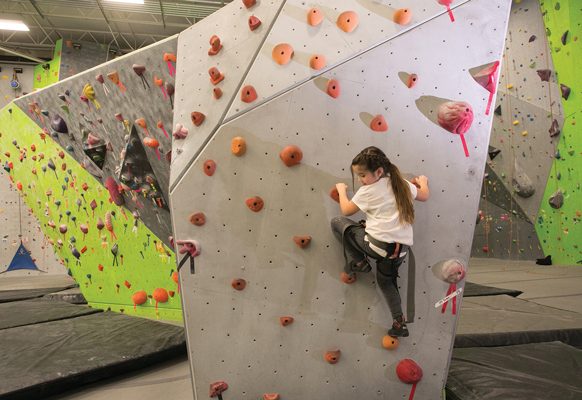
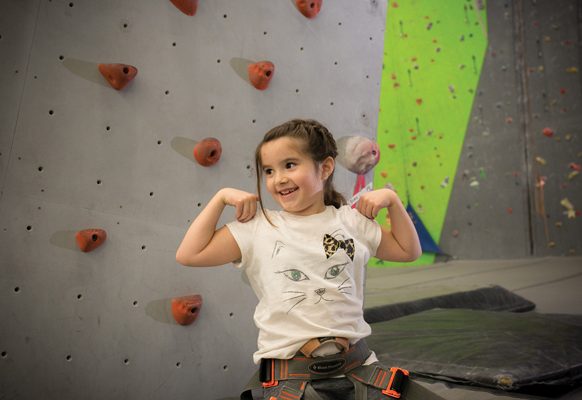
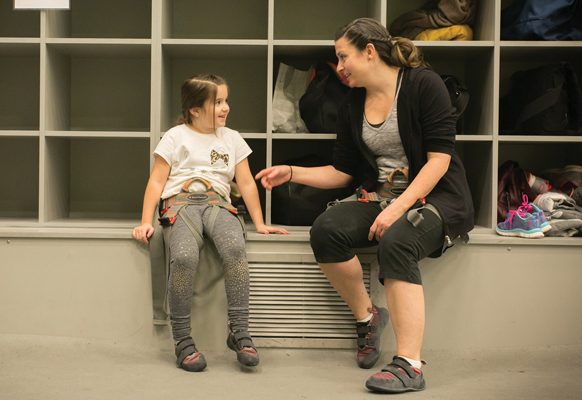
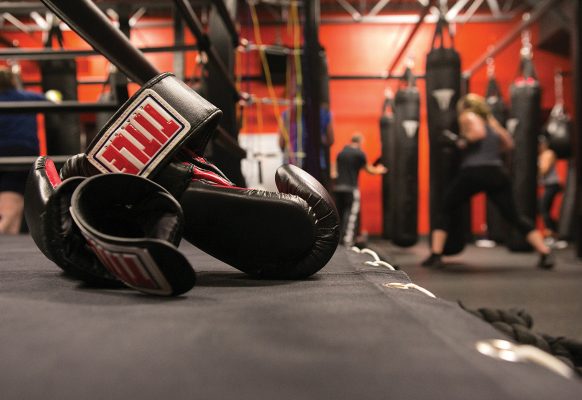
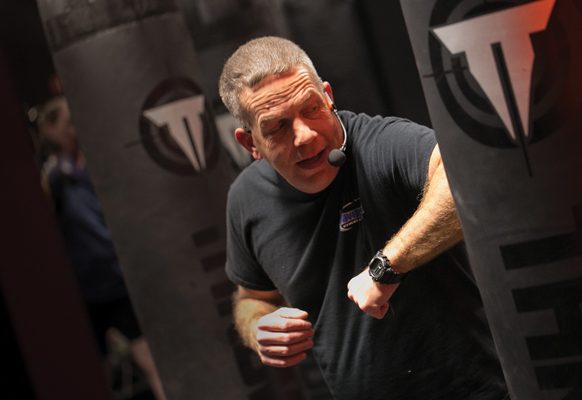
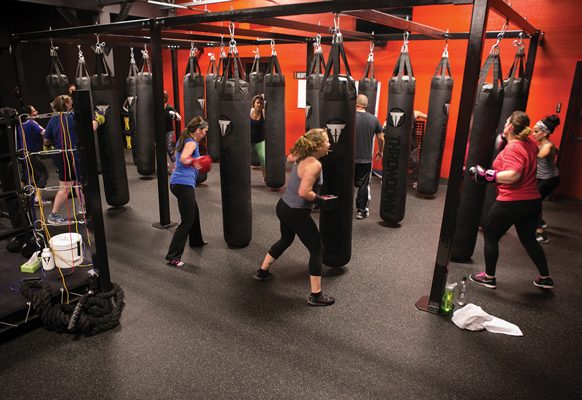
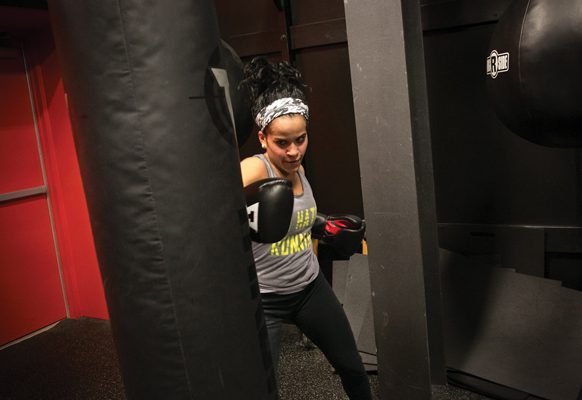
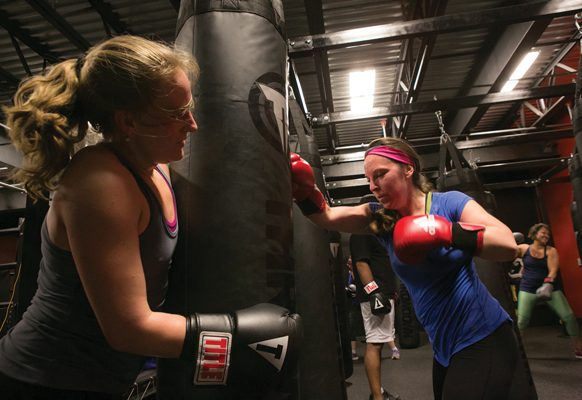
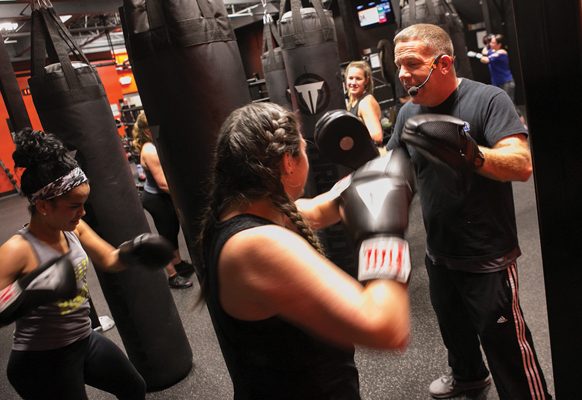
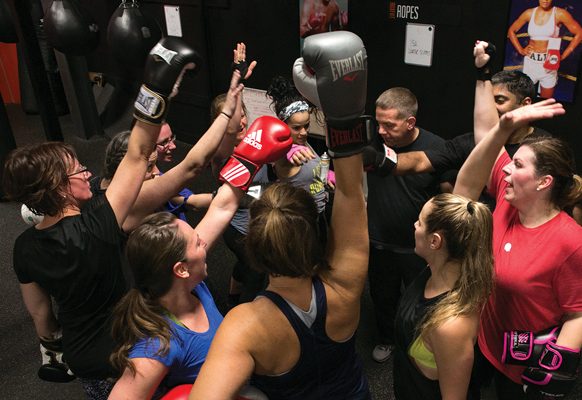
SHARE
PRINT